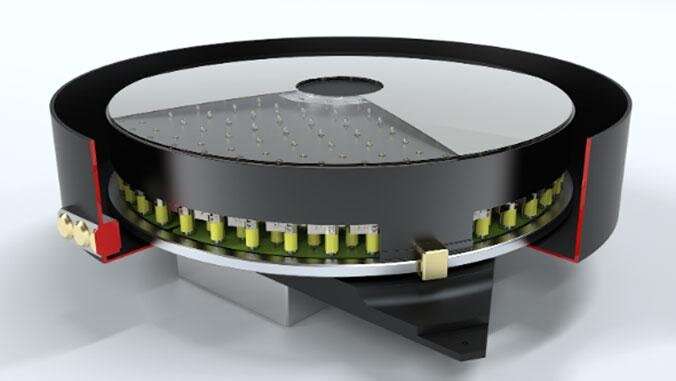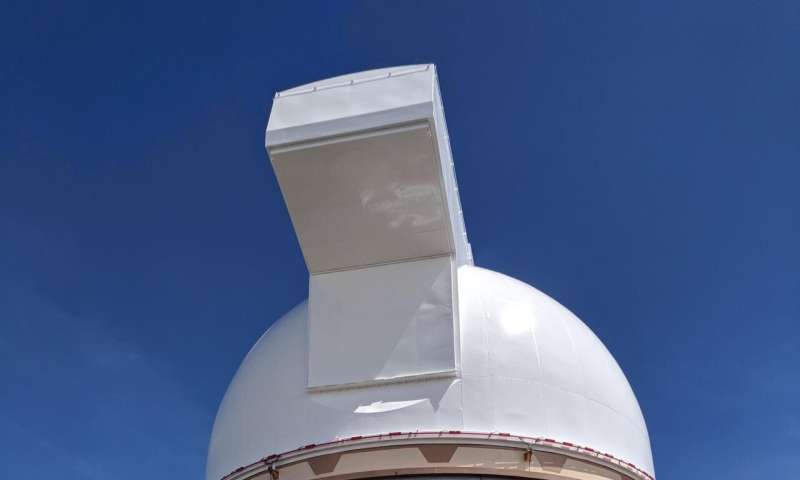Astronomers to deploy breakthrough technology at UH telescope

The National Science Foundation has awarded a $1.1 million grant to a University of Hawaii at Manoa Institute for Astronomy (IfA) scientist to install a high-tech shape-shifting secondary mirror on the UH 2.2-meter telescope on Maunakea.
Turbulence in the Earth's atmosphere blurs images of distant objects, so astronomers have developed tools to measure and compensate for this blurring. Usually, this involves a special camera including a deformable mirror, which undoes the ever-changing distortion. Astronomers can now make the correction within the actual telescope optics.
The larger, primary mirror acts as a big "eyeball" to collect light, and the secondary mirror is typically used to send the light into the different cameras that take the scientific data. By making the secondary mirror flexible, the corrected image can be fed into a variety of instruments, not just one.
The new mirror, an "adaptive secondary," uses a novel actuator technology developed by the research organization TNO (Netherlands) that enables very simple and high-performance operation. Once installed, it will deliver images free from the blurring effects of the atmosphere. This technology has the potential to be used in telescopes around the world of all sizes, including the next generation of extremely large ground-based telescopes such as the Thirty Meter Telescope (TMT) planned for Maunakea.

"[The UH 2.2-meter telescope] will be the first telescope on Maunakea to have an adaptive secondary and the first in the world with these novel actuators. We're leap-frogging ahead of the larger telescopes and paving a way for them," says Mark Chun. The new adaptive secondary mirror is also part of a larger plan to rejuvenate the 50-year-old telescope. "While it is the oldest telescope on the mountain, there are still new tricks we're teaching it to make it a world-class facility," adds Chun.
The new mirror, in combination with the Robo-AO-2 adaptive optics system being deployed by UH astronomer and co-primary investigator Christoph Baranec, will enable the UH 2.2-meter telescope to deliver images comparable in resolution to the Hubble Space Telescope.
"We know Maunakea can provide the best images in the world and we're positioning [this] telescope to do this routinely," said Baranec.
In addition to giving new life to an old telescope, the project presents a perfect opportunity to train the next generation of local scientists and engineers with new core technologies for astronomy.
"We are providing a unique educational experience for local high school students in Hilo and for UH Manoa and UH Hilo graduate and undergraduate students," said Chun "They are developing cutting-edge technology at a world-class science facility right here in Hawaii."
Provided by University of Hawaii at Manoa